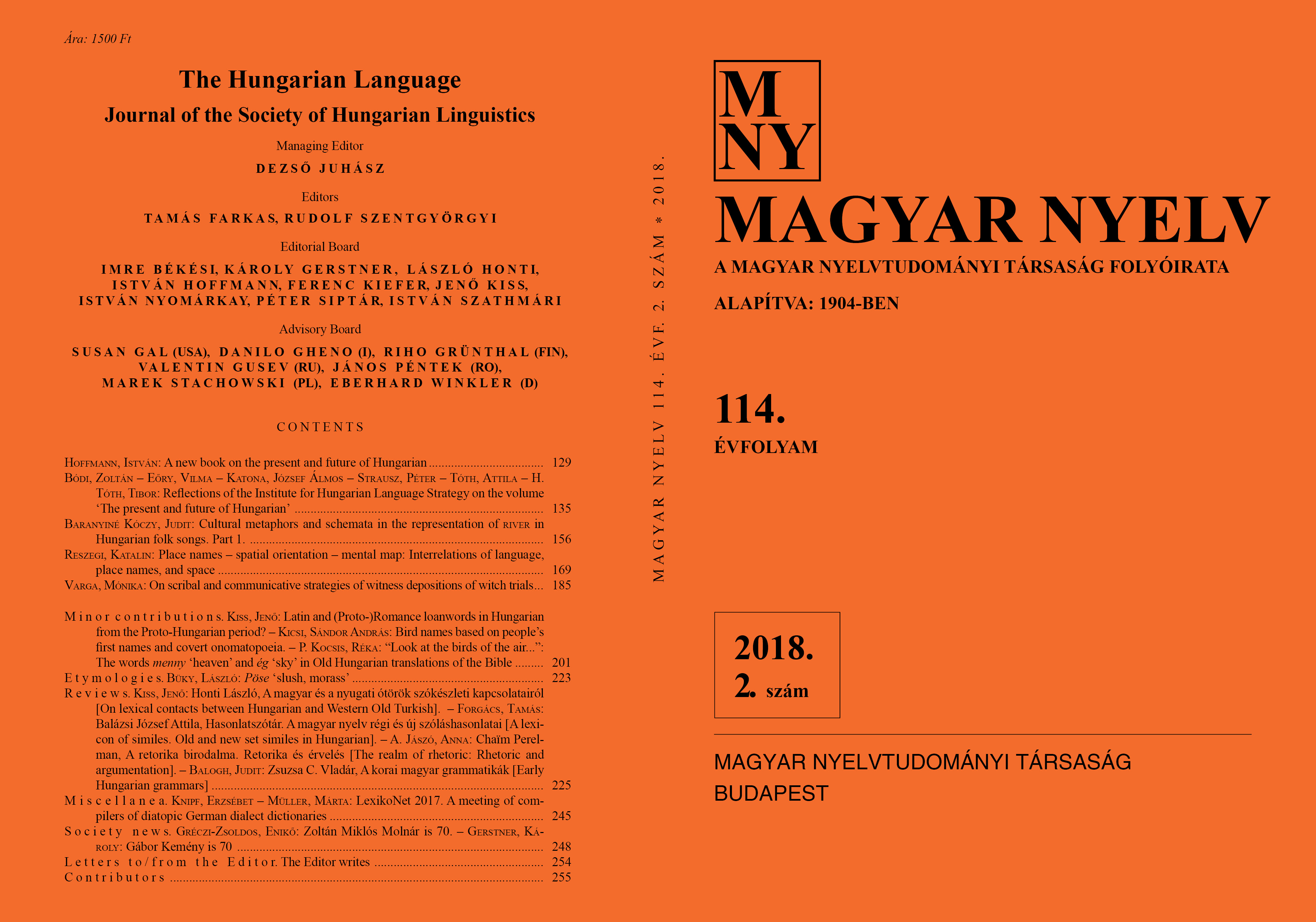Place names – spatial orientation – mental map. Interrelations of language, place names, and space
DOI:
https://doi.org/10.18349/MagyarNyelv.2018.2.169Keywords:
place names, spatial orientation, cognitive map, place name modell, linguistic relativismAbstract
Space, spatial orientation, and mental maps are closely related to language in several respects: first, in the expression of spatial relationships; second, in referring to spatial categories themselves; third, in linguistic aspects of the frame of reference of orientation; and fourth, in place names that identify and refer to individual concrete places and spatial objects. Lessons drawn from the investigation of spatial language are currently also capitalised on by researchers in the problem area of language and mind. Models based on the mental representations of place names are partly language and culture dependent. Speakers’ knowledge about how reliably place names can be correlated with actual properties of the landscape or whether they should simply be taken to identify its individual components also affects cognition: it tells us how much we rely on them in structuring space and developing a mental map.
Downloads
Published
Issue
Section
License
Copyright (c) 2024 Katalin Reszegi

This work is licensed under a Creative Commons Attribution-NonCommercial-NoDerivatives 4.0 International License.
Magyar Nyelv is a Diamond Open Access periodical. Documents can be freely downloaded and duplicated in an electronic format, and can be used unchanged and with due reference to the original source. Such use must not serve commercial purposes. In the case of any form of dissemination and use, Hungarian Copyright Act LXXVI/1999 and related laws are to be observed. The electronic version of the journal is subject to the regulations of CC BY-NC-ND (Creative Commons – Attribution-NonCommercial-NoDerivatives).
The journal permits its authors, at no cost and without any temporal limitation, to make pre-print copies of their manuscripts publicly available via email or in their own homepage or that of their institution, or in either closed or free-for-all repositories of their institutions/universities, or other non-profit websites, in the form accepted by the journal editor for publication and even containing amendments on the basis of reviewers’ comments. When the authors publicize their papers in this manner, they have to warn their readers that the manuscript at hand is not the final published version of the work. Once the paper has been published in a printed or online form, the authors are allowed (and advised) to use that (post-print) version for the above purposes. In that case, they have to indicate the exact location and other data of the journal publication. The authors retain the copyright of their papers; however, in the case of an occasional secondary publication, the bibliographical data of the first publication have to be included.



